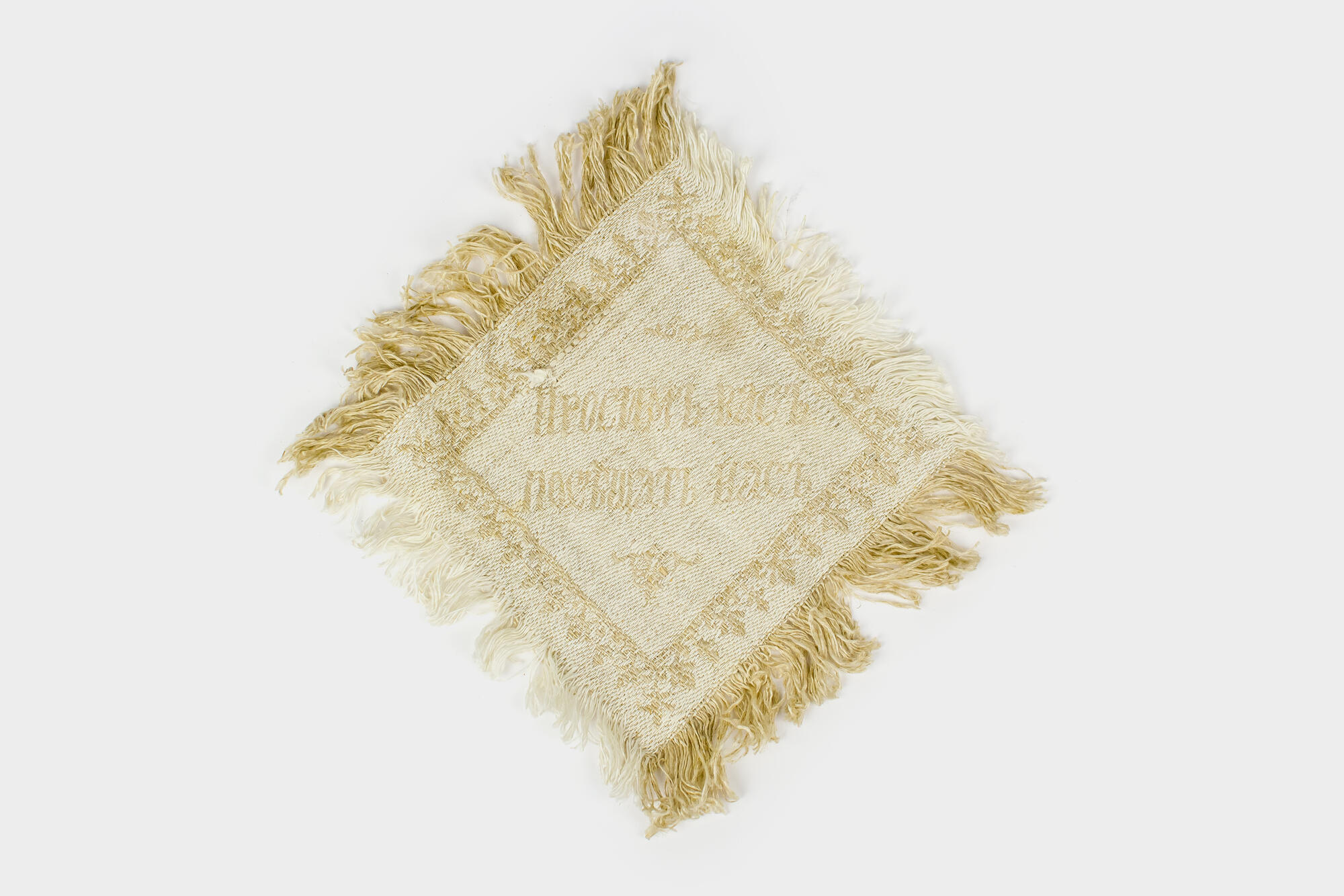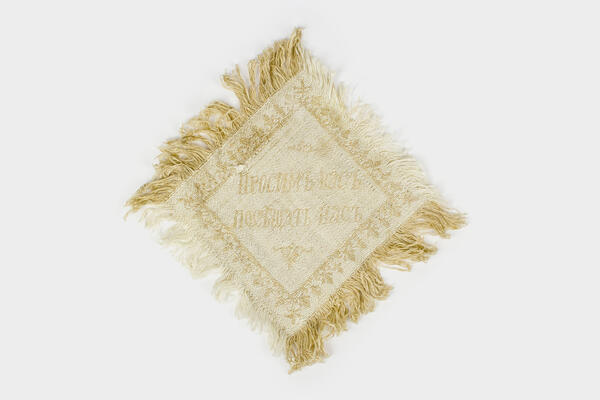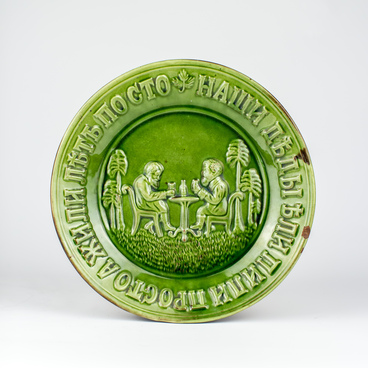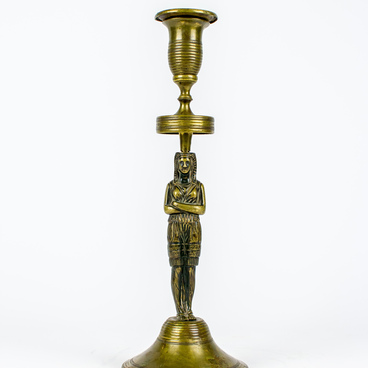The napkin was kept in the family of Trofim Vasilchenkov, the great-grandson of the Tetyushi merchants Nikolai Polosukhin and G. Terekhov (his name has not been preserved). The children from the Tetyushi orphanage bestowed it upon the merchants in gratitude for their guardianship. Vasilchenkov’s relatives donated the napkin to the museum.
The square napkin with fringed edges is woven from beige and milky linen threads. It has floriated edges with the beige threads.
The inscription: “Please visit us” is woven in two lines with the same threads diagonally inside the frame formed by the weave.
The first napkins had been in use already in ancient Rome, and were known as “sudaria” and “mappae”. They represented a piece of fabric used to blot the lips after a meal or wipe the sweat from the forehead. Each guest brought his own napkin to the feast. They were used to wrap the leftover food. The napkins would often be personalized, decorated with embroidered monograms with the owner’s initials.
The use of the napkin in Europe began in the 15th century, at first they were used only by royalty. At that time, not everyone used forks and knives. The commonalty mainly ate with fingers, so the napkins were large-sized so that it was comfortable to wipe oneself.
In the 17th century, the first etiquette instructions on napkin usage at the table appeared in France. A French treatise dating from 1729 stated,
The square napkin with fringed edges is woven from beige and milky linen threads. It has floriated edges with the beige threads.
The inscription: “Please visit us” is woven in two lines with the same threads diagonally inside the frame formed by the weave.
The first napkins had been in use already in ancient Rome, and were known as “sudaria” and “mappae”. They represented a piece of fabric used to blot the lips after a meal or wipe the sweat from the forehead. Each guest brought his own napkin to the feast. They were used to wrap the leftover food. The napkins would often be personalized, decorated with embroidered monograms with the owner’s initials.
The use of the napkin in Europe began in the 15th century, at first they were used only by royalty. At that time, not everyone used forks and knives. The commonalty mainly ate with fingers, so the napkins were large-sized so that it was comfortable to wipe oneself.
In the 17th century, the first etiquette instructions on napkin usage at the table appeared in France. A French treatise dating from 1729 stated,



